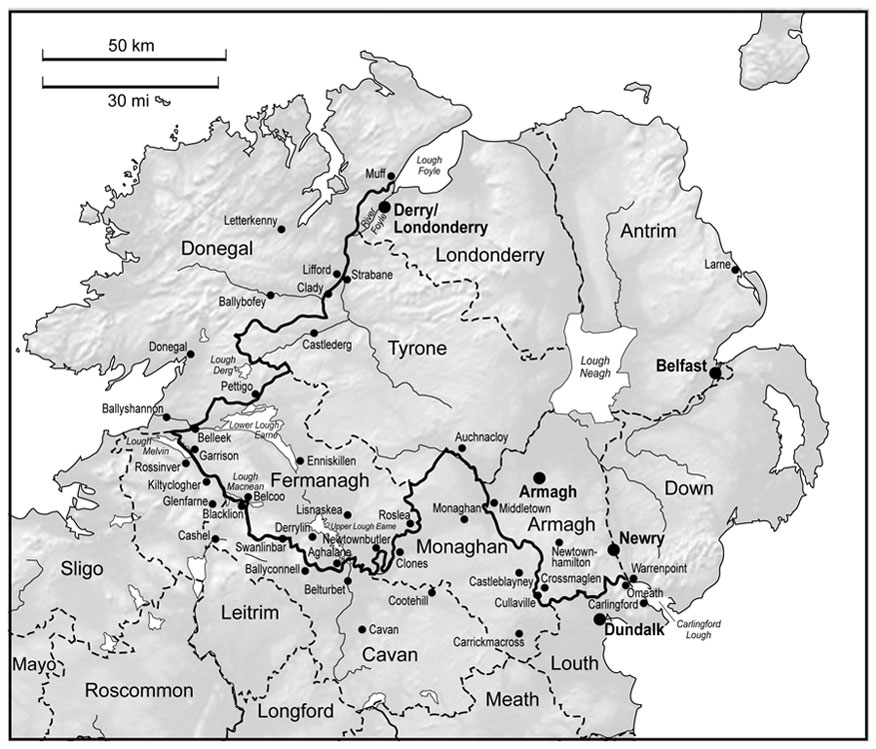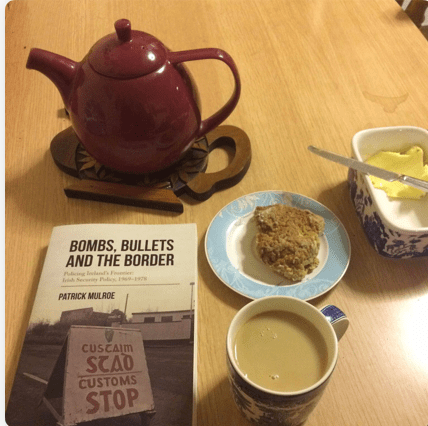Recent Post: Is a Border Poll imminent?


Altnaveigh: Pro Treaty Complicity?
We have just passed the 100 year anniversary of the ‘Altnaveigh Massacre’ of six Protestant civilians in county Armagh on June 17, 1922. Thomas Crozier, Elizabeth Crozier, John Heslip, Robert Heslip, James Lockhart, and Joseph Grey were murdered by members of the 4th Northern Division of the IRA in retaliation for loyalist attacks. I explore elsewhere local events that led up to the atrocity. This post will more raise questions about the broader republican command structure that carried out the murders.
As commander of the 4th Northern Division, Frank Aiken is often the individual held responsible for the murders. Aiken, of course went on to be the Anti Treaty chief-of-staff and, later still, a successful Fianna Fáil TD and cabinet minister. Although the bulk of the evidence suggests Aiken was not at the scene of the murders, his position as commander of the unit responsible puts him in a rather indefensible position. There tends, however, to be less attention focused on those even higher up the command chain. What is often forgotten is that at this stage in June 1922, Aiken’s 4th Northern Division was within the Pro Treaty command structure. Indeed, Aiken’s association with Pro Treaty forces was in later years used against him by opponents. For example, in a bitter exchange of public letters between Aiken and fellow IRA leader Tom Barry in 1935, Aiken’s position in June 1922 was raised by Barry, who claimed;
Mr. Aiken despite his profession of being Anti-Treaty, joined the Provisional F/S Forces in 1922. [Aiken] remained for quite a while in that Army after the Four Courts was attacked; that as a matter of fact he came from Dundalk to Dublin after the Four Courts was shelled by Free State Forces, went to Beggar’s Bush Barracks, drew his pay as a Free State Officer and conveniently returned to Dundalk.
Barry’s account (particularly in relation to pay) is undoubtedly tempered by later political differences, but there is no dispute that prior to the shelling of the Four Courts (i.e. at the time of Altnaveigh), Aiken and his men were within the Pro Treaty command structure, though not formally attested to the new National Army. In fact, the 4th Northern’s supposed affiliation was something Pro Treaty propagandists boasted about. This association is all the more significant to Altnaveigh, as much of the border violence of 1922 was perpetrated by those on the Pro Treaty side.
Significantly, after Altnaveigh the Dáil Publicity Bureau, which was by that stage largely a creature of the Pro Treaty faction, came out in defence of the murders. The Publicity Bureau’s statement on the matter, which dominated the nationalist press, explicitly linked the murders to a notorious USC raid on the home of James McGuill days previously.

Frank Aiken recalled this raid some years later;
One night a party of Specials with blackened faces broke into the house and attempted to rape Mrs. McGuill and other womenfolk—her mother and the maid servants … I saw her [Mrs McGuill] the next day in the most frightful state, and I swore that if I could take it out of the skins of the men who did it I would do it. We went the following night and we laid ambush for the Specials from the camp who were responsible for the attempted rape.
It was while Aiken ‘laid ambush’ for the USC at Dromintee that another party of men from the 4th Northern carried out the massacre at Altnaveigh. In a 1928 compensation claim, James McGuill would explicitly state that the retaliatory [Altnaveigh] raid ‘was carried out with the approval of the then Minister for Defence Richard Mulcahy’ and the men involved were under the command of the ‘Dail Ministry of Defence.’ Aiken and his staff were certainly in regular contact with the Pro Treaty leadership and it is unlikely that he would have carried out such significant reprisals without approval from higher authority. However, we do not know this for certain. Unfortunately, the documentary evidence relating to the incident does not exist. Significantly, we know that at one point such documentation did exist. An intriguing late 1928 Department of Defence memo makes this point clear. The memo reads;
Reports from the 4th Northern [in June 1922] were received and copies of some of them are still extant. They are of a very confidential nature and are available for inspection. The originals were signed by the OC of the Division (Frank Aiken) but I have not any of the originals. My information is that they were destroyed but I am unable to prove this.
It seems that any of the copies have since disappeared. Overall, it is hard not to suspect some complicity of the broader Pro Treaty command in the reprisals that led to Altnaveigh.
For more on these events see ‘Moving away from the Bandit Country myth’ in Ireland and Partition: contexts and consequences, Neil Fleming and James H. Murphy (eds.), (Clemson University Press, 2021).
2 replies on “1922”
I gather that Frank Aiken was strictly speaking neutral – both anti and pro-Treaty IRA leaders were willing to work with him, and he was to be in charge of the clandestine ‘Northern Offensive’, supported by both factions, on that basis?
LikeLike
Aiken issued a statement finally breaking with pro Treaty side on July 15; they were in an unusual position but strictly speaking the 4th Northern were within the command structure of Pro Treaty side, just refusing to take action against the anti Treaty side. I’ve put up Aiken’s statement here which explains that position https://twitter.com/paddymulroe/status/1543347353188548610?s=21&t=8ko1Xu04pvxfHuE2xhCXSg
LikeLike